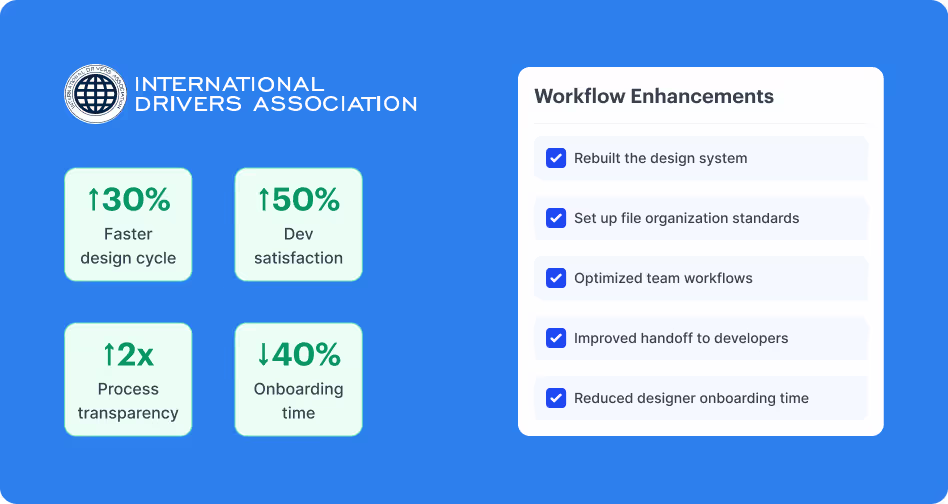Страница управления заказом: апгрейды и автопродление
Трансформировал страницу заказа, добавив возможность улучшения заказа, автоматического продления и будущего развития дашборда.

Моя роль
Я был ответственен за общий дизайн — от пользовательской логики до визуального оформления интерфейса. Инициатива исходила от бизнеса, а я проработал UX-часть и построение взаимодействия. Плотно сотрудничал с владельцем задачи для согласования целей и с техническим лидом — чтобы определить возможные варианты реализации. Моя работа включала продуманный UI/UX-дизайн и активную межкомандную коммуникацию, чтобы учесть как пользовательские сценарии, так и технические ограничения.

До изменений
Страница после оформления заказа отображала только информацию о заказе и ссылку на скачивание. Пользователи не могли управлять заказом — применять апгрейды, продлевать услугу или настраивать подписку. В результате в поддержку поступало множество обращений по вопросам, которые могли бы решаться самостоятельно.
Задача
- Добавить возможность применять апгрейды к оформленным заказам
- Предоставить возможность активировать автопродление
- Подготовить структуру страницы под будущие функции
- Расширить функциональность без изменения текущего интерфейса
- Снизить нагрузку на поддержку за счет интеграции функционала
Решение
Я добавил новые функции в существующую страницу заказа, сохранив её структуру и интерфейс. Это позволило расширить функциональность без ущерба для пользовательского опыта и заложило основу для будущего развития кабинета.
Логика работы функционала
Карточки апгрейдов отображаются динамически в зависимости от типа заказа, чтобы сохранить релевантность и понятность. В некоторых случаях пользователю предлагается ввести адрес доставки перед оплатой — этот шаг органично встроен в процесс.
Апгрейды доступны как в виде отдельных опций, так и в составе наборов — для разных пользовательских сценариев. Управление автопродлением происходит через отдельную страницу Stripe, что соответствует техническим требованиям. Такой подход обеспечивает целостный пользовательский опыт при использовании проверенных внешних решений.


Апгрейд заказа
Каждая карточка апгрейда чётко демонстрирует его ценность и стоимость, помогая пользователю принять обоснованное решение. Некоторые апгрейды объединены в пакеты, чтобы повысить восприятие выгоды и улучшить конверсию.
Все взаимодействия происходят внутри модальных окон — это позволяет завершить процесс без перехода на другие страницы.

Автопродление заказа
Чтобы не усложнять интерфейс, функциональность автопродления была реализована через лёгкое модальное окно с ключевой информацией о подписке.
Из-за технических ограничений полное управление подпиской осуществляется на отдельной странице, размещённой в Stripe. Модальное окно предоставляет краткий обзор и перенаправляет пользователя на Stripe для дальнейших действий.

Результаты
Обновлённая страница заказа предоставила пользователям удобный способ управлять своим заказом. Интеграция апгрейдов и автопродления улучшила пользовательский опыт и значительно повлияла на ключевые бизнес-показатели.
7%
Рост выручки за счёт новых апгрейдов
+10%
Увеличение среднего чека заказа
-30%
Снижение количества обращений в поддержку
5 апгрейдов
Успешно запущены и доступны к покупке
Другие кейсы

Реферальная программа: от генерации ссылки до выплаты
Разработал прозрачную реферальную систему, которая помогает пользователям отслеживать конверсии и удобно запрашивать выплаты.

Валидация страны назначения при оформлении заказа
Интеграция компонента валидации направления для повышения прозрачности и уверенности при оформлении заказа.

Создание дизайн-системы и оптимизация рабочих процессов
Разработал масштабируемую систему с нуля, чтобы упростить процессы и улучшить командное взаимодействие.
.avif)
DefaultCV: сервис хранения резюме под реальные задачи найма
Создал инструмент, адаптированный под нужды аутсорс-компании — от разработки брендинга до финального интерфейса.
